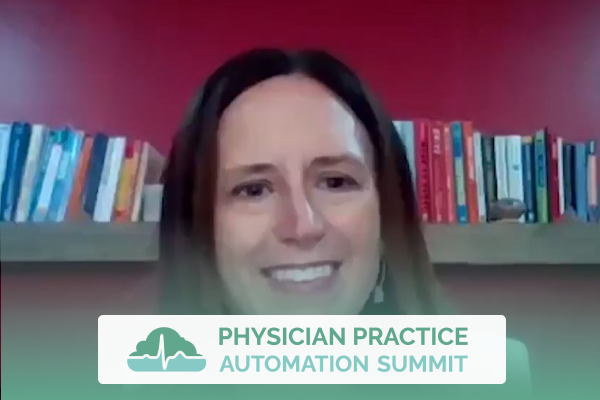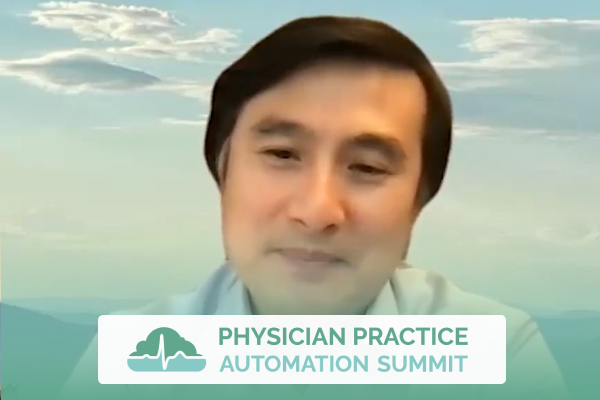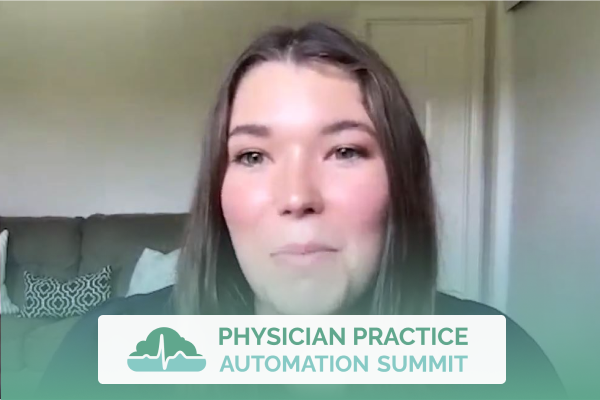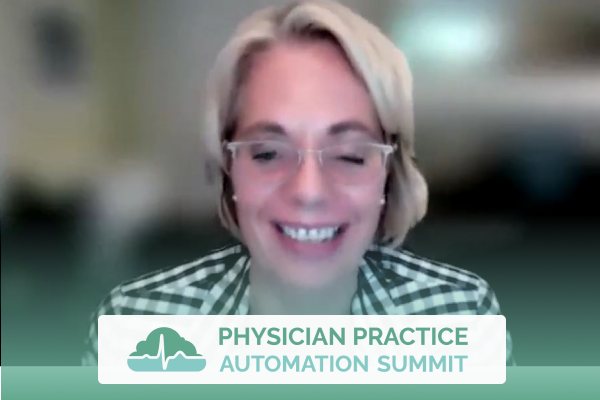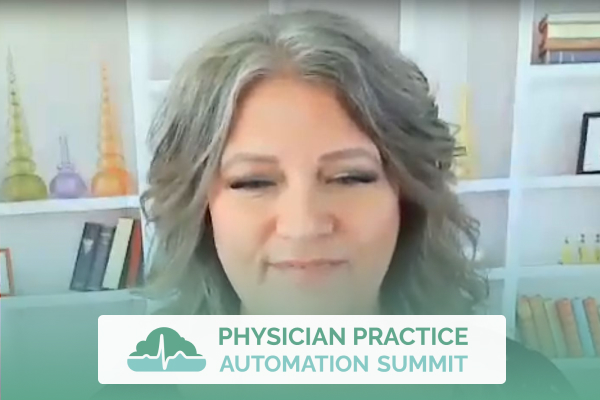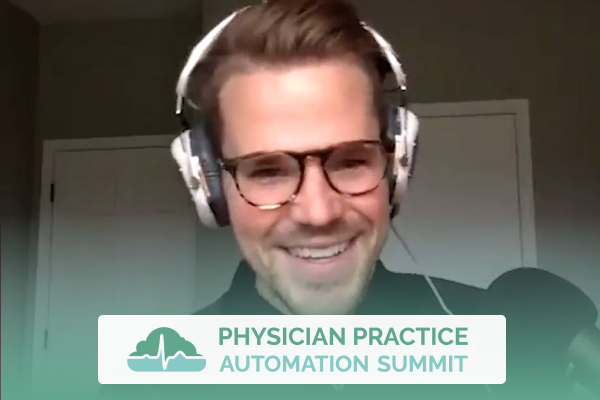Join the discussion below
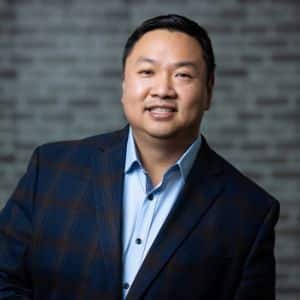
Dr. Ruan is the Founder and CEO of Texas Center for Lifestyle Medicine. He devotes his career in practicing and building systems that allow for efficient delivery of healthcare. He is a board certified internal medicine physician but also have advised with companies to improve their workflow, company culture, marketing,... Read More
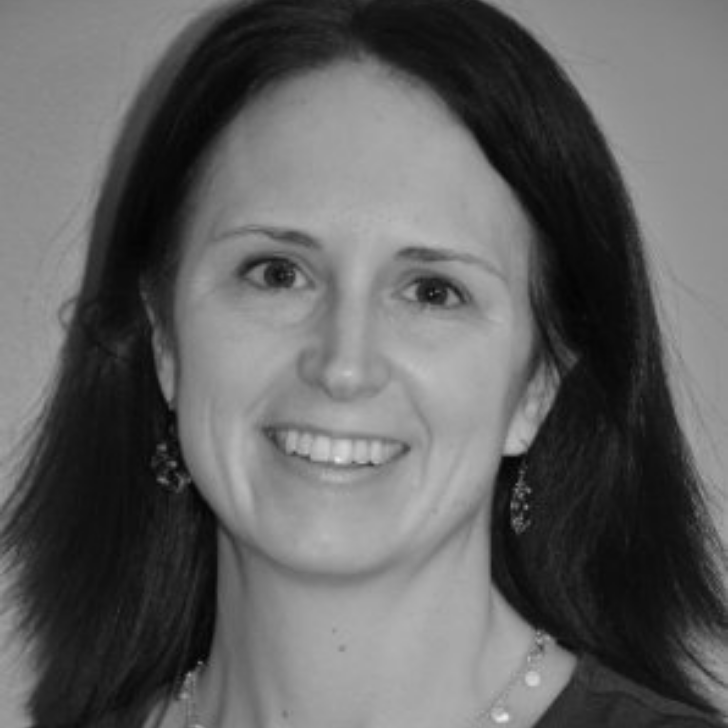
Leanne Mauriello serves as Director of Lifestyle Medicine at Spectrum Health, an integrated health system located in Michigan. She is a behavioral scientist and digital health strategist who is leading the transformation of an integrated healthcare system to bring lifestyle as medicine to the forefront of care delivery and to leverage... Read More
Cheng-Huai Ruan, M.D.
Everyone, I’m really excited to introduce Leanne Mauriello who serves as the Director of Lifestyle Medicine, at Spectrum Health, an integrative health system located in Michigan. She’s a behavioral scientist and digital health strategist who’s leading the transformation of a truly integrated healthcare system, and that’s something that’s really near and dear to my heart, as well. And so, Leanne has contributed through leadership and thought leaders through the NIH funded research, scientific articles, book chapters, white papers, and you name it, multiple lectures, and her passion is really empowering, successful, and lasting change, so that experience is as supportive, and personalized, and relevant, science-based, scalable, and efficient processes to really try to improve the dynamics of what lifestyle medicine is supposed to be. So, obviously my practice is Texas Center for Lifestyle Medicine, so there’s a reason why Leanne is on. We’re really going to get into the nitty, gritty of things. So Leanne, welcome to the Summit. So excited to have you! Welcome. Welcome to the Summit! Appreciate you having!
Leanne Mauriello, PHD
Thank you!
Cheng-Huai Ruan, M.D.
I will tell you what, you know, I got super intrigued about the Spectrum Health program, the culinary program because I kind of try to start on my own, and kind of failed miserably. I want to say the end of 2018. So, you know, we were doing group visits, and stuff like that in my facility, and then my health coaches were like, “Well, let’s just try to do some cooking and culinary creation”, and stuff like that. But then, there’s multiple, like, complexities that we kind of come across. Didn’t think about the ventilation in the building or lack thereof, didn’t think about in all these different things, the fire codes, so it became a complete disaster.
Leanne Mauriello, PHD
Did you start a fire? We’ve done that once. A small one.
Cheng-Huai Ruan, M.D.
Oh, we almost did. Did you?
Leanne Mauriello, PHD
Yeah, almost, almost. Yes.
Cheng-Huai Ruan, M.D.
So we’re like, okay, and then when we figured out, “hey, maybe we can use an air fryer, and all those different things. So, it was kind of a funny thing, but yeah, let’s kind of dive deep into that program. What did it really take to create this Culinary Medicine program?
Leanne Mauriello, PHD
When I was reflecting on this a little bit, I kind of came up with four P’s. Patience, persistence, passion and partners, and it was, yeah, it wasn’t something that happened overnight, for sure, and it definitely took, you know, kind of sticking with it, and believing in it, and then just taking it one step at a time. And so, yeah, I can share a little bit about our journey if that would be helpful.
Cheng-Huai Ruan, M.D.
Well, yeah. You know why ’cause.. I’d like to get into the nitty-gritty details for a bit, but you know, it started with the dream I assume. Like, where did the dream come from, and how did it come into fruition?
Leanne Mauriello, PHD
Okay. Well, I hope I don’t disappoint right out of the gate with the answer to that question, but I want to be, of course, completely transparent that I was brand new to healthcare, and in a role at Spectrum Health. I’m a health psychologist, behavioral scientist by training, as folks have heard, and I did not come up with the idea, “we should build a culinary medicine program”. It was actually a community request out of Grand Rapids, I was brand new to Michigan, brand new Grand Rapids, and there were stakeholders in the community. There was a indoor market that had a teaching kitchen built. There was some interested physicians, dieticians, interested culinary folks that were experimenting in the culinary arts.
A brand new program director of our community college culinary school. And so, there was this kind of this groundswell that happened, and there was outreach to Spectrum Health physician leadership saying, “Would you join a meeting around culinary medicine?”, and I was lucky enough to be new enough in my role to be invited to that meeting, and so it’s one of those things where I think it was all about timing. I was new in a role that was very open-ended. How can we do more as a health system to keep people healthy? So I had the honor and privilege of kind of being the point person to kind of take this idea, and figure out what it would take, and there were already so many interested folks sitting around that table, that initial day that I met them, came alongside to be partners. So yeah, so I want to be honest kind of at the starting point, it wasn’t that, I mean, my passion of course was around helping people improve their health behaviors, improve their health, and culinary medicine ended up being the wonderful kind of beginning tactic to start a great program.
Cheng-Huai Ruan, M.D.
Well, don’t sell yourself short because someone dreamed it up and you actually had to do the hard part in making it happen, right?
Leanne Mauriello, PHD
Yes, yes. Yeah, and along the way, of course, it was literally from the concepts, like what is culinary medicine? So, it certainly became my dream, and it’s now amazing to see how we’ve been able to grow the program, and then embed it within a much larger department of lifestyle medicine.
Cheng-Huai Ruan, M.D.
Okay. So you started with the stakeholders, right? It started with a need, and within this need, something was created. This sounds easier than it really is, I assume. So, now that you come into the community, you’re brand new, you got thrown into this thing. How did you make it to what it is today? Like, did you have to convince a lot more people? Was there a lot of fundraising? How did that really work?
Leanne Mauriello, PHD
Yeah. Yeah. It was literally, you know, first of all, once you kinda get the ground below you or you get on solid ground of even figuring out what is this going to take, right? ‘Cause I mean, food is not the easiest thing. Culinary medicine is not the easiest thing, right? You need faculty, but you don’t need just one. Like you really need a chef, and then a dietician, and/or a physician, and we were fortunate enough to be able to engage a chef, dietician, and physician. You need a space, whether that’s a teaching kitchen, a demo kitchen, you know, something like that. You need some operational support, the planning, the logistics. You know, we thought, “well, we’ll hold a class, we’ll let people see what is culinary medicine.” Well, you need curriculum, and you need recipes, and a plan for the class. And then of course, when you really go to execute, you need a lot of partners.
So, the first thing was really just trying to like figure out where would we get all those pieces, and really, partners was huge. We partnered with the organization Health Meets Food, and we were able to get some curriculum and recipes, and from there we developed a lot of our original, and own curriculum and recipes, but as a starting point, definitely to work with that was huge. And then, in the community connecting with chefs, like I said, our local community college culinary school was a great tactic for us to get a really key partner that had access to kitchens and chefs, and now we have our– we lease it, but we have our own teaching kitchen, right?
So it doesn’t mean where you start is where you end up, but to get all those pieces together, we couldn’t have done it without getting a lot of partners, and, in the context that I was brand new in a health system, we wanted to tap on a registered dietician, even internal partners. I mean, we have quite a number, a large number of dieticians with Spectrum Health, but you know, really trying to find the one that was the most passionate, and experienced, and interested, and educated in food as medicine was an undertaking, and luckily we knocked that out of the park, and got an awesome RD that’s been on our team now for almost four years.
Cheng-Huai Ruan, M.D.
No, that’s great. So, how have the patients been really responding to this?
Leanne Mauriello, PHD
Yeah. So if I can, maybe just to start to help kind of see how, I mean truly, everything was incremental. Our first step with culinary medicine was educating residents.
Cheng-Huai Ruan, M.D.
Residents?
Leanne Mauriello, PHD
Yeah, so we kind of went incremental by audience, and part of it was to partner with Health Meets Food, the requirement is that you’re bringing culinary medicine to medical students or residents, right? So that you’re educating the next generation of the healthcare workforce, and we have residents, so, our first stakeholder was the residency program directors to convince them that culinary medicine should be part of their curriculum, and bring the residents into the teaching kitchen. And from that, we just started getting lots of requests from other clinicians, and providers, and other team members at Spectrum Health. Well, how can we do this? How can we be part of a culinary medicine class? So we started holding some internal classes, you know, and then from there, word gets out and then community members wanted to be able to come to the kitchen, and how can they join us in the teaching kitchen?
I’m like, “Well, we guess we can charge for it, like a nominal fee, but you know, you’re supplying space, and a lot of different personnel, and food”, and at this point, we didn’t have funding in any kind of outside way beyond the health system. So yeah, we kind of stood up classes for the community, and all the long ago, what we had our eye on was the prize of how can we bring culinary medicine to patients as part of a medical appointment. And so, as we were strategizing to build a Lifestyle Medicine specialty practice, we have been really privileged, and grateful that we’ve been able to now lease a teaching kitchen in the community, full time. That is the site of our Lifestyle Medicine practice.
And so, really, just in the last year, in the last year, is when we have held our first culinary medicine shared medical appointment, and what that means is that patients with chronic disease are able to access culinary medicine as part of, you know, for those that are eligible with insurance coverage, and so now we’re truly able to bring it to patients, and still reach all those communities that I mentioned, residents; we just did a class for internal medicine residents last night. So we’re embedded in several residency programs with Spectrum Health. We have a robust calendar of ways that community members can join culinary medicine classes. Not only do we do classes for Spectrum Health team members, we have other employers that have engaged us to do classes for their employees. So we really kind of then spread those audiences much further, but really excited that we’re able to bring it to patients as part of medical care.
Cheng-Huai Ruan, M.D.
Well, that’s amazing. So, as part of a shared medical visit, so I had Tawny Jones on from Cleveland Clinic on another segment of the interview, and we actually went into shared medical appointments or group visits, I guess is the older name for it now, and we really dive into what that really looked like, and we actually got into the numbers a little bit, and both of us decided within my facility, and in Cleveland Clinic that the really the magic number to just kind of make it work financially was a number of six. So how many people were actually included in these shared medical appointments?
Leanne Mauriello, PHD
Yeah, I would say that we’re probably have about that same number too, to kind of break even with them, if you will. Are we talking about doing them in person or virtual?
Cheng-Huai Ruan, M.D.
In person.
Leanne Mauriello, PHD
I mean, I guess, yeah, financially it’s, you know, obviously it’s the same number, but we’ve been doing the classes virtually because of the pandemic, so patients join from their home kitchen, and why I mentioned the number, meeting with them in person, without a pandemic at present, right? Without social distancing, and all of that, we could, you know, certainly have more patients engaged ’cause we could spread them out in the teaching kitchen. What we find is virtually for everyone to have– be able to interact and have a conversation, right. Right now it’s just you and I, but when there’s multiple patients, we want folks to feel as though they have a voice. So, we tend to try to keep it between that six to 10 patients per virtual visit. Oftentimes we’ll enroll or register a few more patients ’cause there’s typically a little bit of a no-show rate, right? Life always gets in the way for some patients, but that’s kind of our core between six and 12 with that kind of, you know, I’d say eight patients is kind of a, especially for doing those appointments virtually a number that allows everyone sufficient opportunity to talk and engage.
Cheng-Huai Ruan, M.D.
Wow. Okay. So yeah, I didn’t realize it was virtual, but that’s brilliant. I mean we’re in the age of digital health, and we’re also in the age of where digital health is actually reimbursed, you know, when partially it’s probably because of the global pandemic, as well, and changing billing codes, but I’ve never even thought about doing a cooking class virtually, but it kind of makes sense because you’re in the patient’s kitchen, you know, you’ll let– show me what’s in your pantry, right? And getting these things out, and I think that’s so much more impactful because I think the patients are really inviting you into their home, like on a virtual platform, but that’s.. I mean, you’re the expert here. Do you think that’s really better for behavioral intervention? If we, as a practitioner or as a dietician or as a chef is physically in their home, live on a computer?
Leanne Mauriello, PHD
If his patient is?
Cheng-Huai Ruan, M.D.
No. If we’re there virtually, right, and I’m talking about the difference between an in-person and a virtual visit when it comes to like lifestyle modifications, I’ll give you example. So, when our patients come to our clinic, and we have one-on-one discussions with them, a lot of it is, you know, kind of the head nodding. “Yes. I’ll do this certain thing”. Right? But then, whenever we have our health coaches or we have other practitioners, you know, go with them virtually, it’s like we’re being embodied into their home, and you know, for us, I don’t have data on this yet, but for us, I feel like, you know, patients is a lot more bought in when we’re technically inside their house, right? Do you find that to be true as well?
Leanne Mauriello, PHD
I absolutely do. I think, you know, when we used to bring folks not in a patient setting, but in a community setting into the teaching kitchen, they’re practicing all that hands-on, important skill building that culinary medicine is in an environment that’s not their home kitchen. By doing the classes and the culinary medicine share medical appointments in their home kitchen they’re, we make sure to prepare patients, what do you need to keep it simple? What knives, what cutting boards, so, but they’re using their own equipment. So, they’re not having to then go home and translate, “How do I do this in my home kitchen?”, they’re literally doing it in their home kitchen, and in an environment that they’re really, comfortable with.
And the other thing is that in the.. when COVID came upon us all, we were in the middle of a pretty large grant through the Michigan Health Endowment fund, where we were reaching underserved families, and had been for a year and a half, and coming into our teaching kitchen. They were, you know, again, families from underserved backgrounds that had one or more children that were at risk or with obesity or chronic disease. So, you know, pretty vulnerable population, and they’ve been doing this for a year and a half, and we were this close to finishing, and had a wrap up for our funding agency, and the pandemic hit, and we’re like, “Oh my goodness, where are we going to do?”. Well, the team rallied, and we flipped a program, and got permission to deliver the last two cohorts virtually, and we had better engagement. The families were more likely to participate from their home kitchen than we experienced for a year and a half, and it makes sense, right? You have schedules, you have children, you have work delays, right, you might not feel that great, and you might feel a little lazy, and you don’t feel like leaving your home, and we, even with the vulnerable underserved population, we had almost a hundred percent engagement. And now, we receive another round of funding, and are doing that program exclusively, virtually.
Cheng-Huai Ruan, M.D.
Well, I mean that that’s so impactful for the community, and I’m sure it’s impactful for the practitioners, too. To really witness some of this metamorphosis, and really challenge the thought of the physician-patient relationship that I would just love to be a fly on the wall when that actually happens. Well, let’s talk about sort of this field. This is sort of a growing field, this Lifestyle Medicine. Of course, my practice is the Texas Center for Lifestyle Medicine, so I’m very involved in it, but let’s talk about this to the audience. You know, lifestyle medicine is a pretty new specialty, right, and we’re addressing the patient reported outcomes, and clinical outcomes, and I think that, I think that there’s the population health, and then there is healthcare workers, and the healthcare workforce, as well, and what you said earlier really rings true to me because I feel like if I was in residency, and I was participating through this, I would have an easier time transitioning into lifestyle medicine. So how does lifestyle medicine affects, not just the population, but the residents, and the doctors, and the dietitians that are going through it?
Leanne Mauriello, PHD
Yeah. In so many ways. Right now in healthcare, we’re kind of at a crisis in so many ways, right? Obviously the pandemic, we have a crisis of chronic disease upon us for our own patients, and outcomes, and reducing healthcare costs, but as you’re mentioning, the other crisis is our workforce, healthcare workforce. That was feeling, not only feeling, experiencing burnout and really extreme symptoms, and consequences of burnout before the pandemic, and now that’s only, you know, exponentially increased. And so, lifestyle medicine is so relevant for providers, and clinicians, and healthcare, you know, I think team members across the board in several ways.
One is just their own health and wellbeing, right? There’s so, first of all, we know that medical trainees get very little training, and you know, whether that’s residency or nursing school, I mean, it’s getting a little bit better, but very little around nutrition education or around lifestyle, right? It’s a side note or footnote. So, they’re coming out without a lot of education or formal education, if you will, and then have a lifestyle that is, you know, they’re stressed, they work long hours, they have a really heavy toll of care-taking, so they have a really heavy stress upon them. So, oftentimes their own health, physical and mental health is not well or as optimal as it could be. And so, what we really try to do is think about how can we bring lifestyle as medicine to not only, you know, our healthcare workforce or our also our patients.. Right? And so we can help them improve their own physical health on their own, emotional wellbeing, and it’s kind of a win-win for all, right, we can help clinicians, and providers become healthier for themselves. We help whether it’s a small or a large organization, private practice, large health system that they’re working in, be a healthier workforce, right? Happier, more engaged workforce, better productivity.
But then, it also really allows clinicians, and providers to experience lifestyle medicine firsthand, so they become an advocate, and a champion for their patients, and whether that’s them then going on, and incorporating lifestyle medicine as part of their practice or referring to other lifestyle medicine programs and providers, I think going through your own personal health transformation, there’s nothing better that can compare to that as far as a provider becoming a champion of bringing lifestyle to the forefront for their patients, and them experiencing lifestyle medicine themselves. And we’ve been fortunate– Yeah. I was just going to share that we opened our lifestyle medicine practice really just in the last year, and our first patients was a pilot of our own employees.
Not all were clinicians, but many were, but even beyond that kind of pilot program is our doors are open to the public. We have many healthcare clinicians and providers who become patients of our practice, and then become champions. You know, some are quiet patients, and experiencing great outcomes themselves, and others, you know, have become really vocal about that. Either writing letters to our CEO, becoming really vocal on their own Facebook page, and really sharing their journey, and I think that’s just really helping us to propel the word forward in a way that we couldn’t really compare in any other methods than our own providers. Being patients of lifestyle medicine, and sharing that message with others.
Cheng-Huai Ruan, M.D.
Yeah. That’s beautiful. And you know, when we first started this talk, you talked about how you guys started a fire. I actually want them to hear that story right now. How did the fire get started?
Leanne Mauriello, PHD
You know, I have not thought about that in a really long time. We were doing a small program for Spectrum Health team members that we called, “Daily Dozen”. We actually structured after Dr. Greger’s app, the “Daily Dozen”. Anyway, we were holding a series of six lunchtime sessions, and the context is important, at our main hospital cafeteria. There was a conference room, so that Spectrum team members can easily join during lunch. And so we, this was a scenario where we had a demo cart, and I don’t remember exactly what happened, but something we were sauteing something, and something started to kind of stick and burn, but it was only a tiny bit of smoke that started, but we thought, “Oh my gosh, we’re in the hospital. The sprinklers are going to go off like any minute!”. So we scrambled and got, you know, a manager right away to help us put out.. I think somebody grabbed the saute pan, and ran out of the cafeteria with it to try to.. yeah, extinguish any smoke, but there was just that moment of, we kind of knew we were going to be able to control the fire, but our fear was the sprinklers were going to go off. So, thanks for making me chuckle. I haven’t thought about that story in a while.
Cheng-Huai Ruan, M.D.
Yeah. For us, you know, our practice used to be in a larger high rise building. And so yeah, there were kind of sprinklers everywhere, and it never came on, but we got super, super curious, like, “Oh my God, this is a lot of smoke”, kind of, you know.. pretty funny. And so, you know, so for us here in Texas, and when we started that process, I think one of the main takeaways for us is that the beauty behind, I think culinary medicine, and shared medical appointments with the cooking classes, stuff like that, is that people can bring their own cultures, too, and this is something that I hadn’t think about, until I actually witnessed it as a participant in one of our sessions, you know, we had someone who’s from Pakistan or someone who’s from Vietnam, and someone who’s from Mexico, and it was so interesting how the bond quickly developed because of the similarities between like, ingredients and culture. I think people were using food to really connect within the class atmosphere, and I thought that was amazing. I mean, have you seen that over there as well?
Leanne Mauriello, PHD
Yes, absolutely, and we see it in lots of ways, just, you know, folks kind of on their own, adapting, thinking about recipes for their own culture. We also are trying to be intentional around that. We started with small ways, like around holidays, doing little Lunch and Learns where folks can submit their family recipe or their traditional recipe, and then our dietician and chef team can help kind of adapt it to be a little healthier, but we went a little further. Our plant-based classes are our biggest hits so you’re kind of, you know, when we started the program in west Michigan, everyone thought plant-based was gonna to be a dirty term. You know, like, don’t kind of like walk into culinary medicine.
Well, it ended up being in, particularly in recent years, our number one requested type of topic for a class. And so, each year we do a plant-based series where we kind of try to do it around a theme, and in 2021 our culinary medicine plant-based series theme is World of Flavors. So, not only are we addressing specific cultural cuisine, we are doing it. So, for the first time with guest chefs from local restaurants. So kind of, you know, well-known Italian chef or Caribbean chef in the community, and they’re coming in. ‘Cause you know, although we’re doing the classes virtually, our teaching teams, and our teaching kitchen, we turned it into a virtual studio.
So, we have guest chefs that are from that cultural background, and leading classes around these themes, that again are bringing plant-based recipes, but cultural favorites and cuisines. And so, it’s been a great success. The other great benefit of doing these classes virtually is that we have participants all around the country or globe. Last week with our Italian class, and we had somebody that joined from London, and they we’re up in the middle of the night cooking with our team, live. And so, it’s just been phenomenal to see with virtual, the reach, and the scale that this type of work can have.
Cheng-Huai Ruan, M.D.
Wow, that’s, that’s really mind blowing because I mean, there’s not really, there’s not really limitation then. You got someone coming in from London being a part of this process, but I can see how this is just super rewarding. So, I really want to congratulate you for this wonderful program. I mean, it’s just sounds fabulous, and it’s something that I think we should really aspire to. Not just as an inspiration, but as something that is tangible, as something that the community already wants, and something that we see that is really easily within reach because I feel like, you know, as physicians, especially within private practice, most of us are kinda stuck in our own little hole, like hamster wheels, and going, and going, but it’s really refreshing to see something like this that was created from the stakeholders, from the community, and how residents came in, and then it became a shared medical visit with the patients, and now you got someone from London joining in. I mean, and that happened in a very short amount of time, right? Like you said, about a year, year and a half or something like that.
Leanne Mauriello, PHD
Well, it’s been a few– from some day one of like, you know, let’s figure out what is culinary medicine. To be fair, it has probably been, you know, four, four and a half years that we’ve been working at it. So I remember, we started from, really nothing. Really incrementally growing yet, ’cause that’s where I’m saying, you know, patience and persistence. We didn’t, we never.. Nobody.. We kept running until somebody close to stop, and no one told us to stop, but it truly was step-by-step, so hopefully folks are also feeling really encouraged, but again, we started without an identified chef dietician, you know, all the pieces.
And so, it took some time to put all those pieces together, and I think that’s the best thing that we did was doing some stakeholder classes, so that really early on our key constituents, right, the kind of C-level suite at Spectrum Health, and other stakeholders in the community could experience culinary medicine firsthand, and that helped us change the conversation from, “Well, this is a good idea, but how will we do it”, you know, to, “Oh my goodness, this is amazing. This is healthcare outside of the walls of a hospital. We must do it”, and it really changed kind of the dialogue into, instead of seeing barriers first, just, really that spirit of how are we going to overcome, and bring this together.
Cheng-Huai Ruan, M.D.
Wonderful. Are you guys in the process of like, collecting the outcomes data or have you collected any at this point?
Leanne Mauriello, PHD
Yes, absolutely we are. You know, and I think that’s probably one of the things early on. We always had an eye, my background is psychology and science, so we always had an eye on metrics, but getting ourselves structured enough, we finally are to have really a team and robust data collection efforts, and, you know, we collected a lot of experience data to help me thoroughly collect data. We certainly have outcomes of our family kitchen program, seeing that it’s not only improving education, self-efficacy, it’s improving dietary behaviors of families, but it’s really, now that we have the practice set up, that we are really robustly set up with standardized tools, data collection tools, standardized intervals by which we’re collecting data, and have to do a quick plug because it’s changed the feasibility of collecting data around diet quality. We are partnering with Dr. David Katz, Diet ID tool, which is a digitally enabled diet quality tool that patients, community members, complete within a minute to three minutes. So that has really reduced our barrier, and the friction around how do we collect diet quality on a large number of people across a period of time. And so, we’re early in our data collection there, but are really excited about the kind of data that we’re gonna be able to have now.
Cheng-Huai Ruan, M.D.
Oh, I can’t wait to see that data. That sounds fabulous. So, now you’re also leveraging technology to accelerate your data collection, and this automation to it, and hopefully we’ll see something published soon I’m crossing my fingers.
Leanne Mauriello, PHD
Yes, yes! We just published an article on digital lifestyle medicine that included pilot data from our iteration of the Complete Health Improvement program, and through that, it’s on the practice side, but we did use Diet ID, and even biometric data collection. So we do have some outcomes that just got published very recently showing improved diet quality, along with improvement of biometric outcomes of a longitudinal Lifestyle Medicine program. But yes, we’ll have to still wait to get the outcomes around like, our culinary medicine programming, and diet quality improvements there, and get that published.
Cheng-Huai Ruan, M.D.
No, that’s fabulous. I’m sure the behavioral changes data’s going to be massive too. I mean, I can’t imagine it not being, right? If you’re having like, you know, close to a hundred percent people showing up on the digital platform, if you’re having a huge outcome on the plant-based program, which you didn’t think it was really going to be a big hit, but now it is. So I think, we as physicians really just have to take the limiters off of our brain, and figure out, some ways to really tackle, and handle this, but I really have to thank you because I mean, you’re four and a half years into this process. And so, it’s going to really shorten the process of guys like myself, and some other physicians, who are into lifestyle medicine to want to replicate some of this within our own community. So, thank you very much. Do you think that this could be replicated easily within any community or do you think it’s really, really kind of specific to Michigan?
Leanne Mauriello, PHD
So, I think it could be replicated in any community. I think that the scale, a lot of what that’s going to be, I think dependent upon is finances, but I don’t mean only dollars. How we were able to really grow as much as we’ve been able to, and as quickly is the executive support of the Spectrum Health system, all the way up to the CEO. And so, we were given a lot of latitude to develop this program because it was a good thing to do for our organization and our community. So through that, I don’t mean necessarily that you need to have a ton of grant funding or a big pocket of a big budget necessarily, but at least, you know, one of those two things or the support of a system to help finance it, to get to the scale that we’ve been able to get it to.
But, I don’t think people should. I think there’s great benefits to come, you know, just in small steps, right? Maybe you choose residents, maybe you choose patients, you know, doing this within a clinical, within a community setting, there’s so many different ways to piece it together, and in trying to break down kind of the steps of what did it take, we did have the opportunity to kind of publish how we developed the culinary medicine in the American Journal of Health Promotion a couple of years ago, and we’re always happy, and get outreach to help support, and, you know, informally, just kind of share our lessons learned along the way with anyone who’s interested.
So, definitely please outreach. We’re always happy to do that into network, and I think it does just take the passion, and persistence of an individual or two within a small or large setting. I think this is a topic that there’s so much interest in that’s once you start talking about it, at least what we found once we started talking about it, people started coming and kind of out of the woodwork, like I’ve been dreaming about doing this, like, you know, once there’s– they see that there’s someone that’s going to help make it happen. You know, we got a lot of partners, and kind of built the village.
Cheng-Huai Ruan, M.D.
No, that’s, that’s amazing. That’s amazing; and what a great chat about this because I think right now, especially during the pandemic, people are now much more into digital health. The elderly are significantly more wanting to adapt telemedicine, and telemedicine platforms, and I think that’s going to continue to grow with the pandemic, really accelerating that process. And now, we’re seeing different CPT codes. There’s there’s new CPT codes that came out in 2021 that specifically deal with any category that deals with behavioral change. So they have a one-on-one visit code that’s could be done on telemedicine or they have a group one as well, so that’s brand new. In 2020 too, they took off a lot of limitations for it ’cause those CPTs came out in July of 2021.
So, I think what we’re finally seeing that there’s movements within our government, within CMS, within our communities, so the demand is there. There’s reimbursable codes for some of this stuff, and that we’re seeing more and more, we just really have to kind of engineer this process, and actually compile data too because I think data is what we’re going to approach the payers, say, “hey, would you like to reimburse for this program?”, and hopefully, we can sort of package it, like the Ornish Lifestyle program or something like that, right, and so that’s I think is going to be something that’s truly popular if the data is actually there, and I’m so glad you guys are capturing that. So, once again, thank you. Thank you for that. Yeah. I think that what we have to do really as a community is to come up with a structure, and this structure is sharing, right? And as you said, you’re publishing all these things, but I’m sure there’s other people in the community that are having the similar ideas, and we really have to share, I think with the physician networks, kind of holding it to our own, especially in the private practice side, and this whole Summit is about getting out there, sharing the understanding of what we can possibly create, decreasing burnout, and the creation of what the products that are created from the physician side, it’s really designed to change medicine, and I don’t think it takes a big institutions or anything to do this.
It really just take one creative idea, have stakeholder buy-in, have people buy-in, and putting it out there, and I think what you’ve developed over the last few years, and what it is right now is a perfect example, how, hey, it just started as an idea, and then someone gave it to you, the idea, you’re like, what do I do with it, and now you’ve seen such growth, and I’m really, really proud of you, and I’m really proud of Spectrum. I’m really proud of the Michigan community for doing this. I’m a little bit jealous, to be honest with you.
Leanne Mauriello, PHD
Maybe there could be ways we can partner. That’d be great. Yeah. Another thing that we’re really thinking about, and I think that a lot of times too, within health systems, we think about entrepreneurs, their technology as kind of outside of the realms of healthcare, and a hundred percent agree with everything that you just said about how do we integrate, and embed lifestyle and culinary medicine in healthcare. And, I’m sure as you’re also thinking about, we’re thinking about also the switch to value-based care, right, and like you said, how do we go to payers, and get programs and outcomes approved, you know, beyond the CPT code, kind of traditional “fee for service” method. We’re also at Spectrum Health, with really a heavy lens on digital and virtual, when we think about the future and scaling, we’re able to have folks like, you know, in London join a virtual, live culinary medicine class.
We’re thinking about how do we bring that to more of an on-demand platform? How, when you think about culinary and lifestyle medicine, that happens, it’s very important that they see lifestyle medicine providers, multidisciplinary team like yourself, like we have a Spectrum Health, but living like some, that has then happened in your everyday life. And so, we’re thinking a lot about how do we bring lifestyle medicine to be relevant into the everyday life, right? So the prescription, the recommendations, how do we engage them, and empower them on an ongoing everyday basis?
And so, we’re doing that by partnering actually with entrepreneurs to really develop, really, hopefully, the first and best in class, digital-virtual lifestyle medicine, social health platform called, “Rise”. And so, just kind of sharing that too, ’cause I think that’s another way, you know, when you mentioned earlier about physicians, healthcare leaders thinking outside the box, we’re really trying to think about healthcare with no boundaries with no zip code, and lifestyle medicine is the future of healthcare. We need to bring that into the homes of everyone, and we can’t imagine how we would do that without really heavily leveraging digital and virtual, and that doesn’t mean that our practice at the teaching kitchen would go away. It means how do we compliment that? So we can bring education and content, and on-demand information, and then virtual-digital social health community groups, so that people can be changing together, but connecting, you know, 24/7, if they wanted to.
Cheng-Huai Ruan, M.D.
No, that’s a brilliant idea, and I’ll tell you what, when the pandemic first hit, we actually made on-demand courses from Texas Center for Lifestyle Medicine in different class categories. If anyone wants to see it’s www.TCLMuniversity.com, where we actually put together, you know, autoimmune and gut health, and metabolics, and there’s one that’s Alzheimer’s, and there’s another one that is improvements within functionality, and stuff like that. So, going through that process, and it’s really because we were really behind on taking care of our chronic patients, cause we were getting so many COVID patients towards the beginning and even right now, and that itself really became a value add, but I do think that is– On-demand is the future. Anyone should be able to access it from anywhere, but this is where a little bit engineering really wants to kick in and see, and marry that with entrepreneurship, and take that to the future. So, I a hundred percent agree with you there.
Well, we’ve been talking for so long. I really want to thank you for coming on, and I wish I can talk for two more hours, cause there’s just so many similarities in what we’re actually doing, but I do want to challenge the doctors that are kind of out there, and if you’re thinking about doing lifestyle medicine, if you’re in lifestyle medicine, compile the data, the data is going to be the key to make sure that we’re all successful, and if we don’t compile the data, someone else will compile data in a negative way to combat against what we’re doing, which is what we’ve seen always, year after year, with insurance companies. So now I think it’s time to do that, but hey, Leanne thank you so much for coming on, and thanks so much for taking the time out of your busy schedule to help us on this Physician Summit.
Leanne Mauriello, PHD
Thank you for having me. It’s been a pleasure.
Cheng-Huai Ruan, M.D.
No problem.
Downloads

